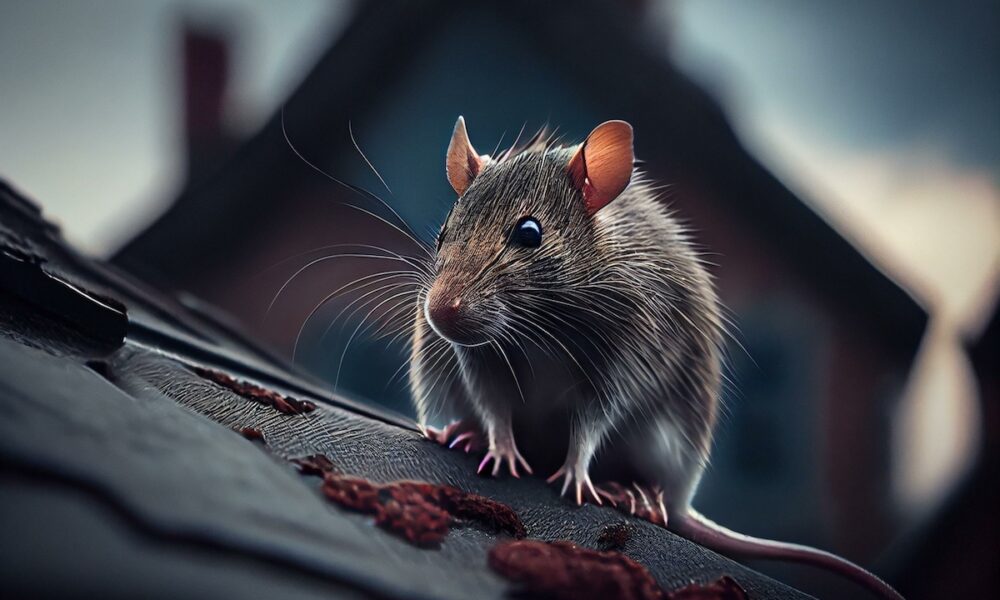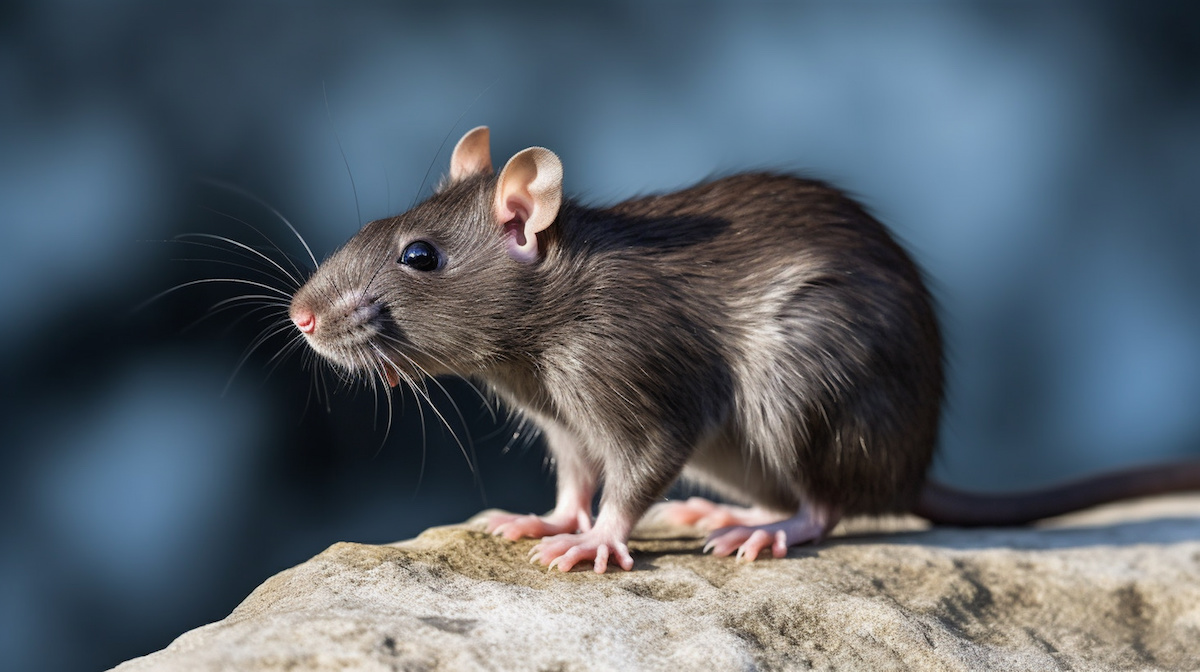
Roof rats. Just the mention of these pests can send shivers down your spine. If roof rat infestations are causing problems in your home, you’ll need to know the steps for getting rid of and preventing future invasions.
These rodents are agile climbers, notorious for their destructive habits and their ability to infest homes. This is particularly true for the warm coastal regions of Florida. If you are wondering how to prevent roof rat infestations, help is here from World Class Wildlife!
What are Roof Rats?
Roof rats are the classic black rats, also known as ship rats. They’re a common pest in many parts of the world, including here in Florida.
These rodents are adept climbers, preferring to nest in high places like attics or in the upper parts of buildings. They’re also nocturnal, meaning they’re most active at night.
Here are some key facts about roof rats:
- Adult roof rats can weigh between 5 and 9 ounces and can grow up to 18 inches in length, including their tail.
- They can cause significant damage to homes by chewing through wires, insulation, and structural materials.
- Roof rats are known carriers of diseases, which can pose health risks to humans and pets.
How to Spot a Roof Rat
Identifying roof rats can be tricky, especially for the untrained eye. They’re often mistaken for other types of rats due to their similar appearance.
However, their long, thin, scaly tails, large ears, and pointed noses set them apart. Their fur is usually dark grey or black, hence the name black rats.
What are The Risks of a Roof Rat Infestation?
Roof rat infestations are a nuisance with a fair share of risks. As mentioned earlier, these rodents can cause extensive damage to your home. They chew through wires, which can lead to electrical fires, and gnaw on structural materials, compromising the integrity of your home.
Meanwhile, roof rats are carriers of various diseases, including salmonella and leptospirosis, posing health risks to both humans and pets.
Common Signs of a Roof Rat Infestation
Knowing the signs of a roof rat infestation is the first step toward prevention. These signs can help you detect an infestation early, allowing you to take action before it gets out of hand.
Here are some common signs of a roof rat infestation:
- Droppings: Roof rat droppings are spindle-shaped and about half an inch long. You might find these in your attic, along walls, or near food sources.
- Gnaw marks: Roof rats have strong teeth that can chew through almost anything. Look for gnaw marks on wires, insulation, and structural materials.
- Greasy rub marks: Roof rats have oily fur. They leave greasy marks along walls and other surfaces on which they frequently travel.
- Unusual noises: If you hear scratching or scurrying noises in your attic or walls, especially at night, it could be a sign of roof rats.
- Remember, early detection is key in preventing a full-blown infestation. If you notice any of these signs, it’s time to take action.

How to Keep Roof Rats Away
Preventing roof rat infestations is a multi-step process. It involves making your home less attractive to these pests and sealing off potential entry points. Let’s start with entry point problem spots and branch off into other ideas on preventing roof rat infestations.
Seal Entry Points
Roof rats can climb well and can squeeze through small openings. They can enter your home through gaps as small as a half-inch.
Here are some common entry points to look out for:
- Vents
- Eave gaps
- Roof joints
- Holes near pipes or cables
Seal these entry points using materials like wire mesh, metal flashing, or sealant. Regularly inspect your home, especially the roof and attic, for new potential entry points.
Keep Your Yard Clean and Tidy
Rats love a messy yard with overgrown trees. But a well-maintained yard can deter roof rats from nesting. You can prevent roof rat infestations with the following advice:
- Trim tree branches away from your house. This prevents roof rats from easily accessing your roof.
- Remove outdoor clutter. Piles of wood or debris can serve as potential nesting sites for roof rats.
- Manage your compost bin properly. Compost can be a food source for roof rats if not managed correctly.
Remember, a tidy yard is less appealing to roof rats.
Use Proper Food Storage and Waste Management
Don’t give roof rats a chance to dine on free food from your trash or pantry. Roof rats are attracted to food sources, and free food will keep rats nice and close to your home. Proper food storage and waste management can help keep them away.
One of the easiest steps is to store food, including pet food, in sealed containers. This applies to both indoor and outdoor storage.
You’ll also want to ensure your garbage bins have tight-fitting lids. Regularly dispose of trash and recycling to minimize odors that can attract roof rats.
Enlist the Help of Natural Predators
While sealing off entry points and maintaining cleanliness is important, there are also natural and humane ways to deter roof rats. These methods can be a good addition to your prevention strategy.
Natural predators can play a significant role in controlling the roof rat population. Birds of prey, such as owls and hawks, like to prey on roof rats.
Encouraging these predators to inhabit your area can help keep the roof rat population in check. You can do this by installing birdhouses or preserving natural habitats where these predators live.
DIY Repellents and Deterrents
There are also DIY repellents that you can use to deter roof rats. For instance, peppermint oil is often touted as a natural rat repellent.
You can soak cotton balls in peppermint oil and place them in areas where you suspect roof rat activity. However, the effectiveness of these DIY repellents can vary, and they should be used as part of a comprehensive prevention strategy.
When to Use Traps and Baits
Still can’t catch those pesky roof rats? Despite your best efforts, you might still find signs of roof rats in your home. In some cases, using traps and bait can be an effective way to control the infestation.
Let’s discuss the types of traps, their placement, and the safe use of bait.
Types of Traps and Their Placement
There are several types of traps you can use to catch roof rats. These include snap traps, live traps, and bait stations. Each type has its advantages and disadvantages.
Snap traps are effective and provide a quick, humane kill. They should be placed where you’ve noticed signs of roof rat activity, such as droppings or gnaw marks.
Live traps allow you to catch and release the rat far from your home. Like snap traps, they should be placed in areas of known roof rat activity.
And finally, be sure that bait stations are enclosed units that house poisonous bait. They are designed to be tamper-resistant, protecting children and pets from accidental contact with the bait.
The Safe Use of Baits and Poisons
While baits and poisons can effectively control roof rat infestations, use them cautiously. They pose risks to non-target animals and should be placed in areas inaccessible to pets and children.
Always follow the manufacturer’s instructions when using these products. If you’re unsure or uncomfortable using them, consider hiring a professional pest control service. Click to learn more information about rat poison safety in the home.
Trouble with Roof Rats? When to Call World Class Wildlife
Sometimes, despite your best efforts, a roof rat infestation can become too much to handle on your own. That’s when it’s time to call us at World Class Wildlife.
We’ll start with a professional assessment, which can identify the extent of the infestation and pinpoint the areas of your home that are most vulnerable to roof rats. This will help us in developing an effective treatment plan for you.
From there, we can safely and effectively use methods that may not be available or advisable for homeowners to use themselves–such as certain types of traps or poisons.
How to Prevent Roof Rats: Long-Term Prevention Strategies
In addition to dealing with the immediate problem, professional pest control services can also help you develop long-term prevention strategies. These might include regular inspections and maintenance of your home’s exterior, as well as advice on changes you can make to your home and yard to make them less attractive to roof rats.
If you need help developing an effective plan, please reach out to us at World Class Wildlife. We are the experts in Florida rat control and rodent prevention. Call now if you’re having trouble with rats of any type.
If you own a rental property, this article offers expert advice on wildlife control and other essential property upkeep tips. Check it out!
